Back in the 70s, when I was about 8 years old, I watched a film on TV called Silent Running. In it Bruce Dern and three little robots tended the remains of Earth’s plant life on a giant greenhouse spaceship floating somewhere between Mars and Jupiter. I cried so much at the shocking ending (which had lonely robot Dewey, tending the forest with a battered watering can while the last of Earth’s flora drifted toward the edge of the solar system) that I don’t think I’ve ever been the same again. Last year, I rented the DVD to see if it had the same effect more than 30 years later and, sure enough, I dissolved on cue. Remarkable.
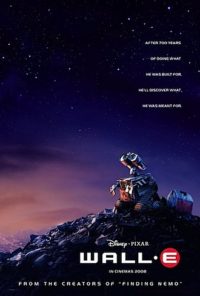 Pixar’s new animated triumph WALL•E owes a great deal to Silent Running, not least it’s dystopic view of human-planet interaction but also the faith in the healing power of anthropomorphic cuboid robots. WALL•E is the last functioning maintenance robot on an abandoned Earth, tidying up the enormous mountains of garbage left behind 700 years previously by the cowardly human population who ran for the stars. Lonely, without really knowing what lonely means, our hero meets EVE, a brilliant (as in shiny) search robot looking for signs of organic life. When she discovers some, and leaves to report back, WALL•E hitches a ride and ultimately finds himself saving civilisation.
Pixar’s new animated triumph WALL•E owes a great deal to Silent Running, not least it’s dystopic view of human-planet interaction but also the faith in the healing power of anthropomorphic cuboid robots. WALL•E is the last functioning maintenance robot on an abandoned Earth, tidying up the enormous mountains of garbage left behind 700 years previously by the cowardly human population who ran for the stars. Lonely, without really knowing what lonely means, our hero meets EVE, a brilliant (as in shiny) search robot looking for signs of organic life. When she discovers some, and leaves to report back, WALL•E hitches a ride and ultimately finds himself saving civilisation.
It was perhaps a little too long for the restless pre-schoolers I shared a screening with, but for anyone and everyone else I whole-heartedly recommend it. And it won’t make you cry so much you throw up.
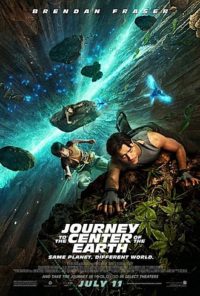 Regular readers will know that I have been quite the cheerleader for the new digital 3D technology (the U2 concert was stunning). Sadly, the first “live action” film to be produced using the process, Journey to the Centre of the Earth 3D, is still more of a side-show stunt than a test of the artistic potential of the technology. Brendan Fraser plays a geologist whose brother was lost on an exploration in some Icelandic caves and when he discovers secret coded notes in his brother’s dog-eared copy of the Jules Verne book, he decides to recreate the expedition, taking his nephew (plus last week’s CT cover girl Anita Briem) along for the ride.
Regular readers will know that I have been quite the cheerleader for the new digital 3D technology (the U2 concert was stunning). Sadly, the first “live action” film to be produced using the process, Journey to the Centre of the Earth 3D, is still more of a side-show stunt than a test of the artistic potential of the technology. Brendan Fraser plays a geologist whose brother was lost on an exploration in some Icelandic caves and when he discovers secret coded notes in his brother’s dog-eared copy of the Jules Verne book, he decides to recreate the expedition, taking his nephew (plus last week’s CT cover girl Anita Briem) along for the ride.
 Alister Barry is one of Wellington’s living treasures. His meticulously researched documentaries (including Someone Else’s Country and In a Land of Plenty) have successfully shone a light on the political and economic changes in New Zealand since the ‘new right’ transformation of the mid-80s in a way that nobody in the mainstream media has even attempted. His new film is based on Nicky Hager’s explosive exposé of shoddy National Party campaigning, The Hollow Men, and it’s interesting to me that the real-life footage of Don Brash presents a considerably less sympathetic portrait of the man than Stephen Papps’ excellent performance in the stage version at BATS. The leaked emails from Hager’s book revealed so many shenanigans that it’s hard to keep the story straight but Barry does a good job of emphasising that it is essentially the same team running National this time around.
Alister Barry is one of Wellington’s living treasures. His meticulously researched documentaries (including Someone Else’s Country and In a Land of Plenty) have successfully shone a light on the political and economic changes in New Zealand since the ‘new right’ transformation of the mid-80s in a way that nobody in the mainstream media has even attempted. His new film is based on Nicky Hager’s explosive exposé of shoddy National Party campaigning, The Hollow Men, and it’s interesting to me that the real-life footage of Don Brash presents a considerably less sympathetic portrait of the man than Stephen Papps’ excellent performance in the stage version at BATS. The leaked emails from Hager’s book revealed so many shenanigans that it’s hard to keep the story straight but Barry does a good job of emphasising that it is essentially the same team running National this time around.
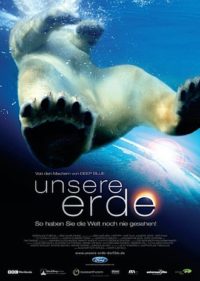 I was lucky enough to preview the gorgeous BBC nature documentary, Earth, at the Embassy during the Festival and I’m pleased to see it return there for a short season. Unlike the tedious and repetitive ice doco The White Planet, this film uses the whole planet as a canvas for some marvellous images and, like WALL•E, the message is that we are stuffing it up at an alarming rate. Only the cutest animals and most colourful plants got through the auditions and Patrick Stewart plays the Morgan Freeman part as narrator.
I was lucky enough to preview the gorgeous BBC nature documentary, Earth, at the Embassy during the Festival and I’m pleased to see it return there for a short season. Unlike the tedious and repetitive ice doco The White Planet, this film uses the whole planet as a canvas for some marvellous images and, like WALL•E, the message is that we are stuffing it up at an alarming rate. Only the cutest animals and most colourful plants got through the auditions and Patrick Stewart plays the Morgan Freeman part as narrator.
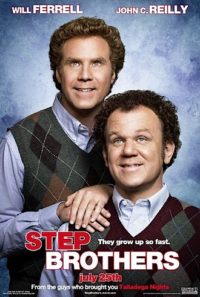 After dismal experiences with Will Ferrell’s recent ice-skating and basketball films I wasn’t looking forward to Step Brothers, a low brow reunitement (new word!) with Talladega Nights co-star John C. Reilly, but blow me down I really enjoyed it! Ferrell and Reilly play two 40-year-old men, living at home, whose solo parents meet and marry each other, making them, you guessed it Step Brothers. It’s a 90 minute riff on one joke but you have to admire their total commitment to it.
After dismal experiences with Will Ferrell’s recent ice-skating and basketball films I wasn’t looking forward to Step Brothers, a low brow reunitement (new word!) with Talladega Nights co-star John C. Reilly, but blow me down I really enjoyed it! Ferrell and Reilly play two 40-year-old men, living at home, whose solo parents meet and marry each other, making them, you guessed it Step Brothers. It’s a 90 minute riff on one joke but you have to admire their total commitment to it.
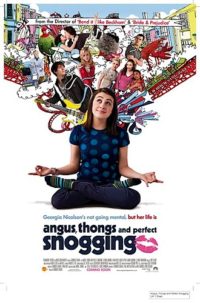 Angus, Thongs and Perfect Snogging was made for teenage girls and I (despite my best efforts) am not one but, even though I lack the required cultural filters, I can’t understand why teenage girls would want to be portrayed as such shallow, tedious, screeching harpies. Boys, make-up, boys, the right kind of underwear, boys again. If these are our future leaders then I despair. Crikey, was Helen Clark like this when she was 14?
Angus, Thongs and Perfect Snogging was made for teenage girls and I (despite my best efforts) am not one but, even though I lack the required cultural filters, I can’t understand why teenage girls would want to be portrayed as such shallow, tedious, screeching harpies. Boys, make-up, boys, the right kind of underwear, boys again. If these are our future leaders then I despair. Crikey, was Helen Clark like this when she was 14?
 All the girls in Angus, Thongs should be sat down and shown the extraordinary Romanian film 4 Months, 3 Weeks and 2 Days so they can see what their single-minded obsession with boys and popularity is likely to get them. I’m stoked that someone has decided to release this film (after screenings at the World Cinema Showcase in April) as it is undoubtedly a stone-cold masterpiece, well-deserving the Palme D’Or it received at Cannes last year.
All the girls in Angus, Thongs should be sat down and shown the extraordinary Romanian film 4 Months, 3 Weeks and 2 Days so they can see what their single-minded obsession with boys and popularity is likely to get them. I’m stoked that someone has decided to release this film (after screenings at the World Cinema Showcase in April) as it is undoubtedly a stone-cold masterpiece, well-deserving the Palme D’Or it received at Cannes last year.
Profound, sensitive, emotionally arduous and perfectly structured, 4 Months follows a day in the life of student Otilia (Anamaria Marinca) as she selflessly tries to organise an abortion for her light headed friend Gabita (Laura Vasiliu), while fending off the attentions of family and boyfriend. As close to perfect as makes no difference.
Printed (for the most part) in Wellington’s Capital Times on Wednesday 24 September, 2008. Except for Earth, Step Brothers, Angus, Thongs, etc. and 4 Months which were cut for space.

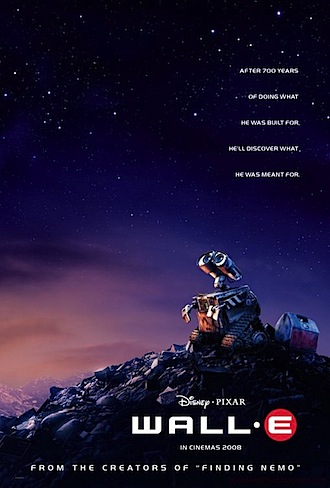
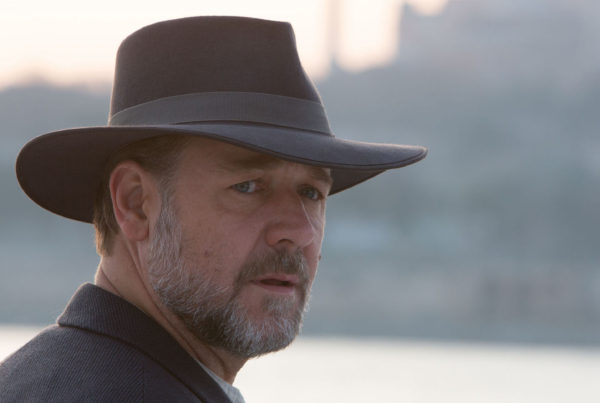
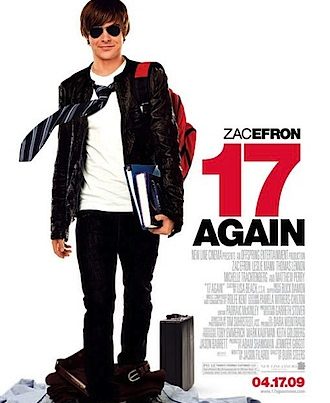
“Crikey, was Helen Clark like this when she was 14?”
I would say she would have been the exact opposite!
[quote comment=“”]“Crikey, was Helen Clark like this when she was 14?”
I would say she would have been the exact opposite![/quote]
Since I finished typing this (and also fumbled to express myself on Nine to Noon on Wednesday) I’ve worked out what I was trying to say:
If real teenage girls are not like this, then what is the point of the film? And if they are like this, then we are all doomed.
And if they’re not like this but want to be perceived as being like this – oh, I don’t know. I would just like to think that youth might aspire to something more, that’s all. Don’t we have a planet to save?